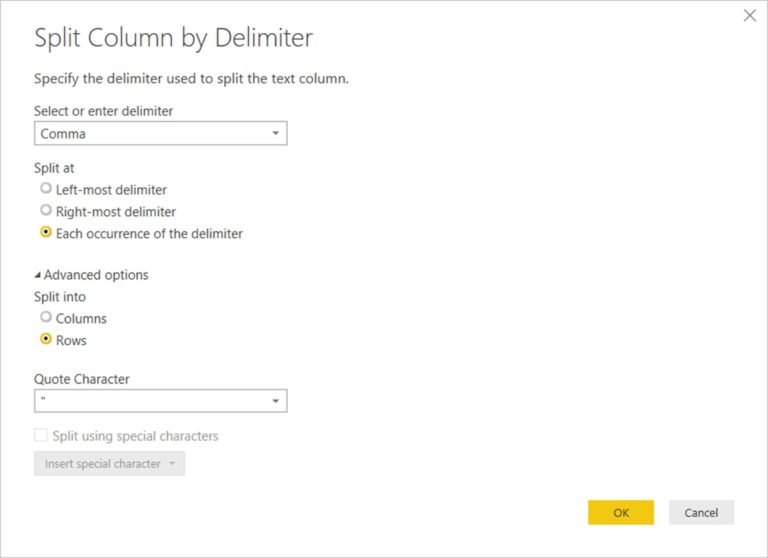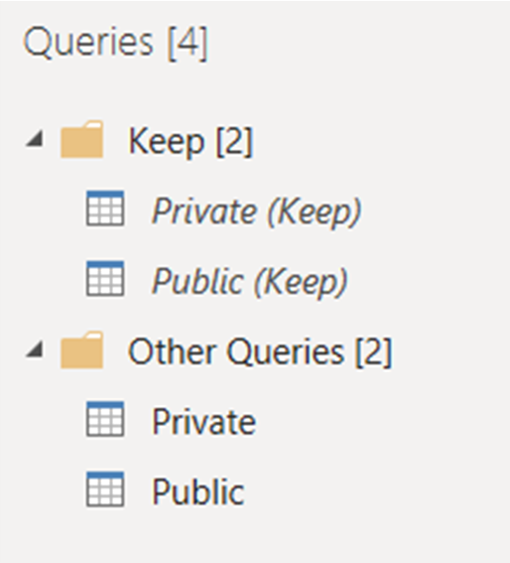Activating Potential – Uncover the Hidden Gems of Power BI Relationships for Unmatched Data Analysis
Power BI, the popular business intelligence tool by Microsoft, offers a wide range of features and capabilities to help organizations make sense of their data. Among the many powerful functionalities, Power BI Relationships stand out as a key aspect for unleashing the true potential of data analysis. In this article, we will explore the intricacies of Power BI Relationships, their significance, and how they can be effectively leveraged to enhance your data analysis capabilities.
Introduction
As businesses collect and generate vast amounts of data, it becomes increasingly challenging to extract meaningful insights and make informed decisions. Power BI Relationships come to the rescue by establishing connections between different tables within a data model, enabling seamless integration and analysis of diverse datasets. By understanding and effectively utilizing these relationships, you can unlock hidden gems within your data, leading to unmatched analytical capabilities.
Understanding Power BI Relationships
In Power BI, Relationships define how multiple tables are connected to each other based on common fields or columns. These connections allow the data model to consolidate information from different tables into a single, coherent view. By establishing relationships, you can analyze data from multiple tables as if they were a single table, making it easier to gain insights and visualize relationships between various data points.
The Importance of Power BI Relationships in Data Analysis
Power BI Relationships play a pivotal role in data analysis, providing the foundation for accurate and efficient reporting. They ensure data integrity, enable slicing and dicing of information, facilitate drill-through actions, and empower users to create interactive visualizations. Without well-defined relationships, the data model would lack coherence and the ability to uncover meaningful patterns or trends.
Types of Power BI Relationships
Power BI supports four types of relationships: One-to-One, One-to-Many, Many-to-One, and Many-to-Many. Each relationship type serves a specific purpose and is based on the cardinality and uniqueness of the data between tables.
One-to-One Relationship:
Explanation of one-to-one relationship.
One-to-Many Relationship:
Explanation of one-to-many relationship.
Many-to-One Relationship:
Explanation of many-to-one relationship. Types of Power BI Relationships (continued):
Many-to-Many Relationship: A many-to-many relationship occurs when multiple records in one table can be associated with multiple records in another table. This relationship type is useful when dealing with complex data models where multiple entities have interconnected relationships.
Creating and Managing Power BI Relationships
To harness the full potential of Power BI Relationships, it is crucial to understand how to create and manage them effectively. The following steps outline the process:
Defining Relationships:
Explanation of how to define relationships in Power BI using the graphical interface or the formula approach.
Enforcing Referential Integrity:
Importance of referential integrity in maintaining data consistency and how to enforce it within Power BI.
Cross-filtering and Cross-highlighting:
Explanation of how cross-filtering and cross-highlighting features in Power BI allow users to analyze data across related tables.
Leveraging Power BI Relationships for Data Analysis
Once relationships are established, you can leverage them to perform advanced data analysis tasks. Here are some key ways to harness the power of Power BI Relationships:
Combining Data from Multiple Tables:
How to use relationships to consolidate data from multiple tables and perform cross-table calculations.
Simplifying Complex Queries:
How relationships simplify complex queries by eliminating the need for manual data joins and aggregations.
Filtering and Slicing Data:
The ability to filter and slice data across related tables, enabling focused analysis based on specific criteria.
Creating Interactive Visualizations:
How relationships enable the creation of interactive visualizations that dynamically respond to user interactions.
Best Practices for Power BI Relationships
To ensure optimal performance and maintain data integrity, it is essential to follow best practices when working with Power BI Relationships. Consider the following guidelines:
Choosing the Right Relationship Type:
Factors to consider when selecting the appropriate relationship type based on the data and analysis requirements.
Avoiding Circular Dependencies:
The importance of avoiding circular dependencies in relationships to prevent data inconsistencies.
Optimizing Performance:
Techniques for improving query performance by optimizing relationships and data model design.
Advanced Techniques for Power BI Relationships
Power BI Relationships offer advanced techniques that further enhance data analysis capabilities. Explore these techniques to uncover hidden insights:
Bidirectional Filtering:
Explanation of bidirectional filtering and its application in scenarios where both tables in a relationship need to filter each other.
Role-Playing Dimensions:
How to handle multiple roles of a single dimension table in a data model using role-playing dimensions.
Handling Multiple Relationships between Tables:
Techniques for managing and distinguishing multiple relationships between tables in complex data models.
Overcoming Challenges in Power BI Relationships
While Power BI Relationships provide numerous benefits, challenges may arise during their implementation. Here are some common challenges and ways to address them:
Handling Null Values:
Strategies for handling null values within relationships to ensure accurate data analysis.
Dealing with Inconsistent Data:
Approaches for handling inconsistent or incomplete data to maintain the integrity of relationships.
Resolving Data Conflicts:
How to resolve conflicts when data from multiple tables does not align, ensuring reliable analysis results.
Conclusion
Power BI Relationships are a fundamental aspect of data analysis, allowing organizations to unlock hidden insights and make data-driven decisions. By understanding the different relationship types, creating and managing relationships effectively, and leveraging advanced techniques, you can maximize the potential of Power BI for unmatched data analysis.
By following best practices, optimizing performance, and overcoming challenges, you can ensure the integrity and accuracy of your data analysis processes. Power BI Relationships provide a solid foundation for combining data from multiple tables, simplifying complex queries, filtering and slicing data, and creating interactive visualizations.
In conclusion, Power BI Relationships empower you to delve deeper into your data and uncover hidden gems that can drive business growth and success. By harnessing the power of relationships, you can gain valuable insights, make informed decisions, and stay ahead of the competition in today’s data-driven world.
FAQs
How do I define relationships in Power BI?
To define relationships in Power BI, you can use the graphical interface by dragging and dropping fields between tables or utilize the formula approach using DAX (Data Analysis Expressions) language.
Can I have multiple relationships between tables in Power BI?
Yes, Power BI allows you to have multiple relationships between tables. This feature is particularly useful when dealing with complex data models that require different types of relationships for various analysis scenarios.
What is the role of referential integrity in Power BI relationships?
Referential integrity ensures that relationships between tables are maintained by enforcing consistency and preventing orphaned or invalid data. It helps maintain the integrity and accuracy of your data analysis.
How can Power BI relationships improve data analysis?
Power BI relationships enable you to combine data from multiple tables, simplify complex queries, filter and slice data, and create interactive visualizations. This enhances your data analysis capabilities and helps uncover meaningful insights.
What are the best practices for optimizing performance in Power BI relationships?
Best practices for optimizing performance in Power BI relationships include choosing the right relationship type, avoiding circular dependencies, optimizing data model design, and utilizing features like bidirectional filtering and role-playing dimensions when appropriate.
For more in-depth knowledge and hands-on experience with Power BI Relationships, you can access our exclusive training program. Gain access now by visiting https://bit.ly/J_Umma.
Now, armed with a comprehensive understanding of Power BI Relationships, you can take your data analysis to new heights and unlock the full potential of your organization’s data.
Thank you for taking the time to read this article on “Activating Potential – Uncover the Hidden Gems of Power BI Relationships for Unmatched Data Analysis.” We hope you found it informative and insightful. Power BI Relationships are a crucial aspect of data analysis, enabling you to connect and analyze data from multiple tables seamlessly.
By understanding the different types of relationships, creating and managing them effectively, and leveraging advanced techniques, you can harness the full power of Power BI for unparalleled data analysis. Remember to follow best practices, optimize performance, and overcome challenges to ensure the accuracy and integrity of your analysis.
If you have any further questions or need assistance with Power BI Relationships, we have compiled some frequently asked questions (FAQs) below to provide additional clarity. Feel free to explore them for more information.
FAQs:
How do I define relationships in Power BI?
To define relationships in Power BI, you can use the graphical interface by dragging and dropping fields between tables or utilize the formula approach using DAX (Data Analysis Expressions) language.
Can I have multiple relationships between tables in Power BI?
Yes, Power BI allows you to have multiple relationships between tables. This feature is particularly useful when dealing with complex data models that require different types of relationships for various analysis scenarios.
What is the role of referential integrity in Power BI relationships?
Referential integrity ensures that relationships between tables are maintained by enforcing consistency and preventing orphaned or invalid data. It helps maintain the integrity and accuracy of your data analysis.
How can Power BI relationships improve data analysis?
Power BI relationships enable you to combine data from multiple tables, simplify complex queries, filter and slice data, and create interactive visualizations. This enhances your data analysis capabilities and helps uncover meaningful insights.
What are the best practices for optimizing performance in Power BI relationships?
Best practices for optimizing performance in Power BI relationships include choosing the right relationship type, avoiding circular dependencies, optimizing data model design, and utilizing features like bidirectional filtering and role-playing dimensions when appropriate.
Remember, Power BI Relationships have the potential to transform how you analyze and interpret data. So, embrace their power, unlock the hidden gems within your data, and gain a competitive edge in today’s data-driven world.















